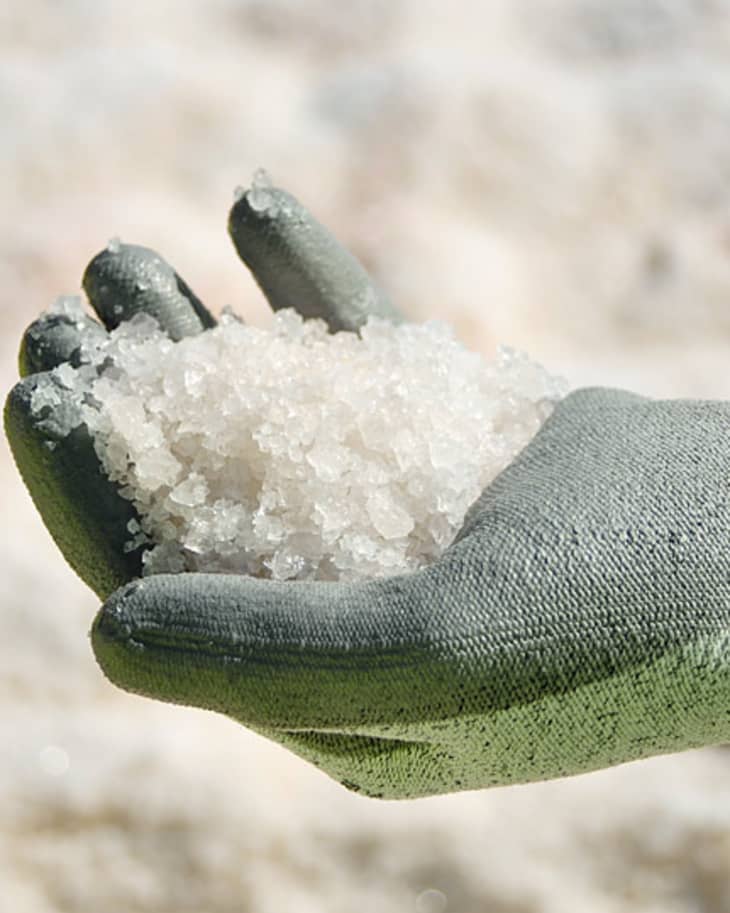From Ocean to Box: How Sea Salt Is Harvested
If you’ve ever flown into or out of the San Francisco airport, you have probably looked out the window and wondered about those weird red ponds scattered along the edge of the Bay. Wonder no more: they’re sea salt harvesting ponds!
I was recently invited along on Diamond Crystal Salt’s annual sea salt harvest right here in the San Francisco Bay. Let me tell you, it was a fascinating trip from Bay to box. Oh, and why the startling red color in those ponds? You’ll never guess.
Sea salt harvesting is actually a long tradition here in the Bay Area. A combination of the shallow shoreline, the long sunny days, steady temperatures, and the coastal winds create an ideal environment for harvesting sea salt. Originally, there were several individually-owned salt operations all along the coast, starting with Captain John Johnson in 1854. These were eventually bought and consolidated into one operation by Leslie Salt Company, which in turn was bought by Cargill’s Diamond Crystal Salt in 1978.
If you buy a box of Diamond Crystal Sea Salt, you are getting 100% San Francisco Bay sea salt. This is Cargill’s only sea salt operation in the world, and in fact, the only solar sea salt production facility in the United States, period. (Their popular Diamond Crystal Kosher Salt comes from subterranean salt water deposits.)
The process for harvesting sea salt on this commercial level is really a scaled-up version of how sea salt has been harvested for centuries. They create a series of interlocking shallow ponds that are exposed to the sun and wind. As the water evaporates and the salt concentrates, the water is moved along the chain of ponds closer to the actual harvesting facility.
The sea water starts off with a natural salinity of about 3% and ends up at about 25% salinity. At this point, the salt starts to crystallize and can be harvested. Get this: the whole process takes about five years!
Once it’s ready for harvesting, a truck with a rake attachment breaks up the salt bed. A harvester comes along to scoop up the salt and transfers it to dump trucks, which then carry the salt to the washing facility. The salt is rinsed first in a brine solution to wash out calcium and other impurities, and then in actual Bay water to dissolve the magnesium chloride. What you’re left with is 99.8% pure sodium chloride sea salt.
A lot of work has been done between Cargill and the US Fish and Wildlife Service to restore and maintain the wetlands along the Bay shore. Cargill has reduced its salt harvesting facility to about 3,000 acres, turning nearly 40,000 acres over to the Wildlife Service. The Don Edwards National Wildlife Refuge supports seven endangered species and serves as a way-station for migratory birds. They are about 8 years into a 50-year plan to fully restore the marshlands in this area.
As to the red color in those ponds you see flying over San Francisco Bay, it comes from algae and brine shrimp attracted to the higher salinity of the salt ponds. These organisms don’t survive once the salt water reaches its highest salinity levels, no worries about shellfish in your sea salt.
On the whole, I was really impressed with the low-fi nature of this whole sea salt production. Until the salt is actually harvested and transferred to the final processing facility, the process is remarkably un-mechanized. The sea water is evaporated naturally by the sun and wind. The water is also transferred from pond to pond almost entirely by the force of gravity and the tides, with only a few mechanical pumps at key locations. As far as I could determine, nothing is added to the water to make the process faster or change the nature of the sea salt. The fact that at the time of harvesting, the salt is already nearly a pure product is pretty amazing.
Take a look through the slide show above for the full tour and check out the sea salt harvest for yourself!
Related:
Washington Cherries: From Orchard to Pie
(Information for this post was gathered during a press trip sponsored by Cargill Diamond Crystal Salt. All views and opinions expressed in this post are the personal views of the author.)
(Images: Emma Christensen)
